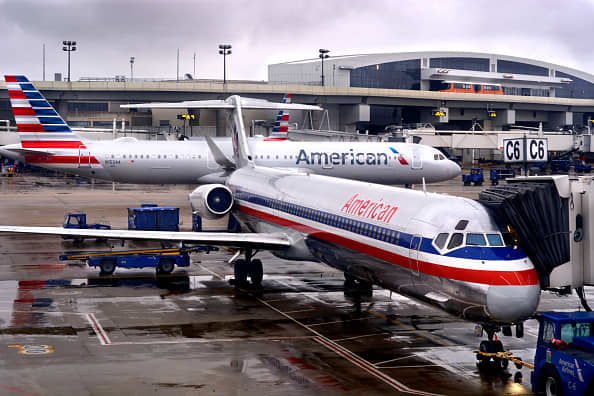The process to bring back furloughed pilots can take as long as 15 months due to the industry’s extensive and intricate training system, according to an airline labor union official and pilot.
“It’s a very large ship and when you stop it, it takes a lot of energy to get it back up and running,” Dennis Tajer of the Allied Pilots Association told CNBC’s “Squawk Box” on Thursday as American Airlines and United begin to furlough more than 32,000 workers in the absence of additional coronavirus relief from Washington. Of the 19,000 employees American is set to furlough, around 1,600 will be pilots.
“It takes months and months on the down cycle and back up to get these pilots back up and flying, and the public is ready to fly when it is safe to fly,” explained Tajer, spokesman for APA, which represents American Airlines pilots. He’s also a captain at the airline.
Carriers have been lobbying lawmakers and the White House for another $25 billion in support on top of the assistance that was granted as part of the $2.2 trillion package approved in March. There is bipartisan support to extend aid to airlines, which continue to face travel declines due to the Covid-19 pandemic. The first batch of federal grants and loans prevented the airlines from cutting jobs through Sept. 30.
House Speaker Nancy Pelosi and Treasury Secretary Steven Mnuchin pledged to continue discussions after failing to come to a stimulus consensus Wednesday. House Democrats initially aimed to pass their newly scaled down $2.2 trillion rescue legislation Wednesday night, but they called off their vote until at least Thursday to allow more time for bipartisan talks.
Both American and United said they would reverse course on furloughs if lawmakers and the Trump administration reach a deal for a new relief package that includes more airline payroll support.
Pilots talk as they look at the tail of an American Airlines aircraft.
Mike Stone | Reuters
Tajer said it may take about 12 to 15 months to “crew up” an airplane because of the way pilots need to be trained, as well as the typical structure of furloughs. He said the pilots with the least experience are likely to those to be furloughed first.
“Pilots are assigned to an aircraft and a seat position. When we furlough, we furlough from the bottom, so all of our junior first officers — mostly on narrow [body aircraft] — are removed,” Tajer explained. “That causes a trickle down of training that has to happen in order to maintain a system, even a greatly reduced system.”
He said pilots who have to go into training to learn to fly different aircraft are then unavailable to complete scheduled routes. Additionally, there can be a backlog in the training system because “there are only so many simulators and so many instructors to do that,” he said.
Then, when airlines begin to recall furloughed pilots, there is additional training that needs to happen as flight schedules are scaled up, Tajer said.
The lag time is why financial assistance to help airlines keep pilots employed is important, he said. “When it moves along, we can go right in and carry on our business.”
“We’re a vaccine industry. We’re a vaccine country right now,” Tajer added. “We’ve got to have this bridge extended across the turbulent river or we’re going to be walking right into the middle of the river, and the repercussions will be long term. It’ll affect a lot more than the airline industry.”
